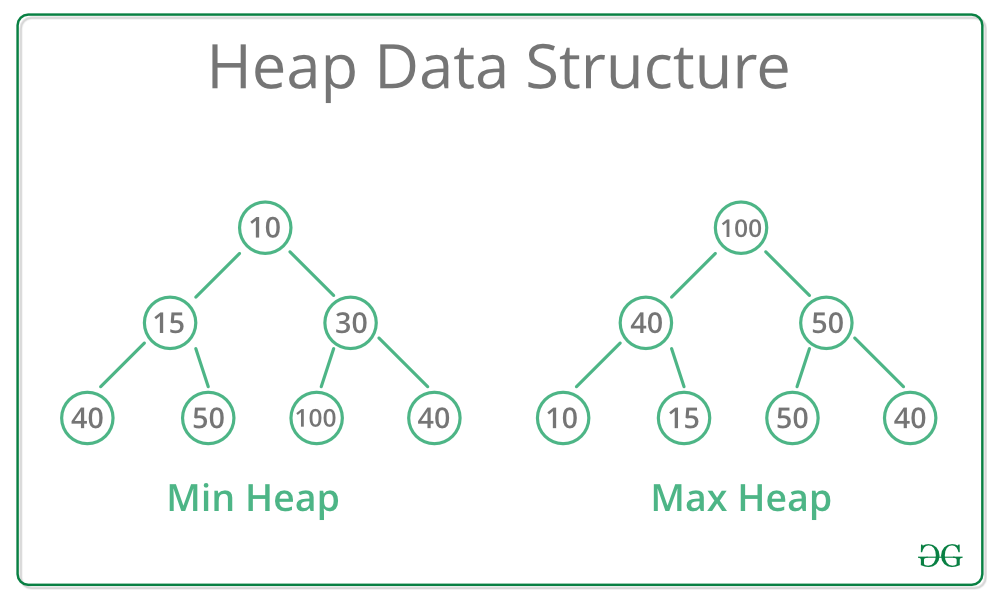Lua堆数据结构实践:优先队列与堆排序的深入解析
发布时间: 2024-09-10 05:00:55 阅读量: 65 订阅数: 65 


# 1. 堆数据结构基础
## 1.1 堆数据结构概述
堆是一种特殊的完全二叉树,通常用数组或链表实现。在堆中,每个节点的值都大于或等于其子节点的值(称为最大堆),或者每个节点的值都小于或等于其子节点的值(称为最小堆)。堆结构常用于实现优先队列、堆排序等算法。
## 1.2 堆的基本操作
堆的主要操作包括插入(insert)、删除最小/最大元素(deleteMin/deleteMax)和调整堆(heapify)。插入操作通常将新元素添加到堆的末尾,并向上调整以满足堆的性质。删除操作则是移除堆顶元素,然后将堆尾元素放到堆顶,并向下调整。
## 1.3 堆与优先队列的关系
堆是实现优先队列的一种有效数据结构。优先队列按照元素的优先级进行出队操作,堆的性质正好可以保证最高优先级的元素总是位于队列的前端。在实际应用中,堆结构能够以对数时间复杂度完成优先级的调整和元素的检索。
# 2. Lua中的优先队列实现
### 2.1 优先队列的数据结构和操作
#### 2.1.1 优先队列的概念与应用场景
优先队列是一种特殊的队列,在这种队列中,每个元素都有一个优先级属性。在优先队列中,元素的删除操作是按照优先级顺序进行的,而不是按照入队的顺序。因此,具有最高优先级的元素总是位于队列的前端。
这种数据结构在多种应用场合下非常有用。例如,在事件驱动的模拟中,事件可以按照发生的紧急程度排队;在计算机网络中,用于调度不同优先级的数据包传输;在任务调度中,用于安排高优先级任务的执行顺序。
#### 2.1.2 优先队列的关键操作:插入与删除
在优先队列的实现中,两个关键的操作是插入和删除。插入操作用于添加新元素到队列中,而删除操作用于移除并返回队列中优先级最高的元素。
- 插入操作:通常,新元素插入到优先队列的末尾,然后通过一些步骤调整,直到它处于正确的位置(即符合优先级顺序)。
- 删除操作:总是移除优先级最高的元素(通常是队列的头部元素),并返回它。如果优先队列是通过最小堆实现的,那么最小元素将在顶部,反之亦然。
### 2.2 Lua优先队列的代码实现
#### 2.2.1 使用数组构建优先队列
在Lua中,我们可以使用数组来构建优先队列。以下是使用数组实现优先队列的一个基本示例:
```lua
function PriorityQueue()
self.heap = {} -- 初始化数组作为堆
self.count = 0 -- 记录当前元素的数量
end
function PriorityQueue:insert(value, priority)
table.insert(self.heap, {value, priority}) -- 插入元素
self.count = self.count + 1
self:_percolateUp(self.count) -- 调整元素位置以满足优先级顺序
end
function PriorityQueue:remove()
local top = self.heap[1]
self.heap[1] = self.heap[self.count] -- 将最后一个元素放到顶部
self.count = self.count - 1
self.heap[self.count + 1] = nil -- 移除最后一个元素
self:_percolateDown(1) -- 调整新顶部元素的位置以满足优先级顺序
return top[1]
end
function PriorityQueue:_percolateUp(index)
local element = self.heap[index]
while index > 1 do
local parentIndex = math.floor(index / 2)
local parent = self.heap[parentIndex]
if parent[2] <= element[2] then break end -- 如果父节点优先级更高或相同,则停止
self.heap[index], self.heap[parentIndex] = self.heap[parentIndex], self.heap[index] -- 交换位置
index = parentIndex
end
end
function PriorityQueue:_percolateDown(index)
local element = self.heap[index]
local count = self.count
while (2 * index) <= count do
local childIndex = 2 * index
local swapChild = childIndex
local child = self.heap[childIndex]
local right = childIndex + 1
if right <= count and self.heap[right][2] < child[2] then
swapChild = right
child = self.heap[right]
end
if child[2] >= element[2] then break end -- 如果子节点优先级更低,则停止
self.heap[index], self.heap[swapChild] = self.heap[swapChild], self.heap[index] -- 交换位置
index = swapChild
end
end
```
该代码实现了插入和删除操作,还包含私有方法`_percolateUp`和`_percolateDown`用于调整堆的结构。
### 2.3 Lua优先队列的性能分析
#### 2.3.1 时间复杂度分析
- **插入操作**:最坏情况下,每次插入需要O(log n)时间。因为新元素可能需要一路向堆的顶部进行堆化(heapify),直到根节点。
- **删除操作**:删除最大/最小元素的时间复杂度也是O(log n),因为需要从根节点开始向下堆化。
#### 2.3.2 空间复杂度分析
优先队列的空间复杂度与存储元素的数量直接相关,为O(n),其中n是队列中元素的数量。这是因为我们需要一个数组来存储队列的所有元素。
在下一章节,我们将深入探讨堆排序算法以及如何在Lua中实现。
# 3. Lua中的堆排序算法
0
0





